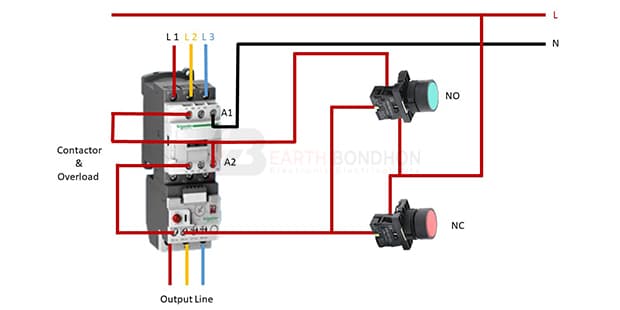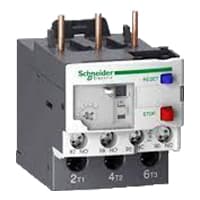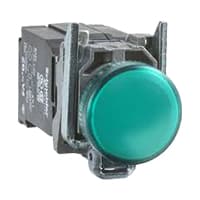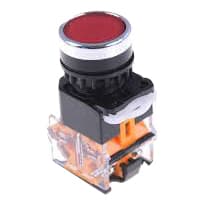Wiring an Electrical Contactor and Overload:
This diagram shows How To Make Wiring an Electrical Contactor and Overload. In this circuit we use a magnetic contactor with overload, a NO switch, and an NC Switch. This circuit diagram is very simple and easy to make connect it. In this circuit, we use two voltmeters. If you want to know more about this circuit, please check our youtube video below the post. For more information please check our category.
Advertisements
Components needed For this Project:
You can get the components from any of the sites below:
- Magnetic Contactor 40A [See Buy Click Amazon]
- Motor Protector Overload [See Buy Click Amazon]
- Push Button NO Switch [See Buy Click Amazon]
- Push Button NC Switch [See Buy Click Amazon]
*Please note: These are affiliate links. I may make a commission if you buy the components through these links. I would appreciate your support in this way!
Advertisements
Components used to make the Wiring an Electrical Contactor and Overload:
A magnetic contactor is an electromagnetic switching device. It is generally used for controlling 3-phase Motors. The operation of a magnetic contactor is similar to that of a Relay. but a relay is used for low-power or low-voltage connections, and a magnetic contactor is used for high-power or high-voltage connections. As soon as the supply is applied to the magnetic contactor coil. its normally open contacts are closed and normally closed contacts are opened and the associated devices are also operated. This is how a magnetic contactor works.
02. Overload Relay:
Overload Protection is Protection Against a Running Overcurrent That Would Cause Overheating of The Protected Equipment. Hence, An Overload is Also a Type of Overcurrent flow. Overload Protection Typically Operates on an Inverse Time curve where the Tripping Time Becomes less as the Current Increases. This Overload Protector is an Essential Component for Many Sockets Power Systems. The Top-Quality Overload Protector can Effectively Protect Electrical Products from Power Surges.
NO (Normally Open) Terms Refer to a Type of Dry Contact or Wet Contact. A Push to Make Switch Allows Electricity to flow Between its 2 contacts when held in. When the button is released, the Circuit is broken. This type of Switch is also known as A Normally Open (NO) Switching system. As its name implies, a Normally Open (NO) Switch Contact or “a Contact” is a Switch. Put very simply, a Normally Open Sensor will have no Current When in a Normal State But When it Enters an Alarm State it will have +5V applied to the Circuit.
04. NC Switch:
An NC (Normally Closed) Push Button is a Push Button That, In Its Default State, Makes Electrical Contact With The Circuit. An NC (Normally Closed) Push Button is a Push Button that, in its Default State, Makes electrical Contact With the Circuit. When The Button Is Pressed Down, The Switch no Longer Makes Electrical Contact And The Circuit is Now Open. When The Button is Not Pressed, Electricity Can Flow, But When it is Pressed The Circuit is Broken. This type Of Switch is Also known As a Normally Closed (NC) Switch.
Thank You for visiting the website. Keep visiting for more Updates.
Frequently asked questions
So contactors provide the current to our motor. Their job is to establish and interrupt power in an electrical circuit. Overload protection protects the motor from drawing too much current flow over a longer period, which could cause the motor to overheat and burn up.
The overloads were determined using 125% of the FLA, 7A x 1.25 = 8.75A. The maximum allowable size for the overloads was 9.8A. The overloads can be sized at 140% of the FLA if the overloads trip at rated load or will not allow the motor to start, 7A x 1.4 = 9.8A
The main difference between a contactor and a relay was their load capacity. Contactors are designed to handle high current diagrams, typically above 15 amps, while relays are more suitable for low to medium current flow loads, usually below 15 amps.
What is Overload? When the load takes more current than normal or what's rated, then an electrical overload happens. For instance, a 12 gauge wire could carry 20 amperes of current flow in safe conditions. To protect the circuit diagram, you need a minimum of 20A or 125% of the load amperage.
The short circuit occurs in the system when the neutral and the live wires come in contact with each other, whereas overload occurs when the number of electrical equipment connects to the same socket.
Read more Single Phase Wiring
What is a kilowatt-hour (kWh) | kwh formula | What does kwh mean
Introduction to Electrical Units and CircuitskW and kWh on your electricity bill As your home uses electricity during...
What is the Difference Between kVA | What does KVA mean | kVA formula
Difference Between KVA ExplainedWhat does KVA Mean? There are technical terms aplenty when it comes to generators, and...
Power Factor | Power Unit | Energy | Electricity Unit
Power factor definition | Calculating Power FactorPower Factor Values In a purely resistive circuit, the power factor...





0 Comments